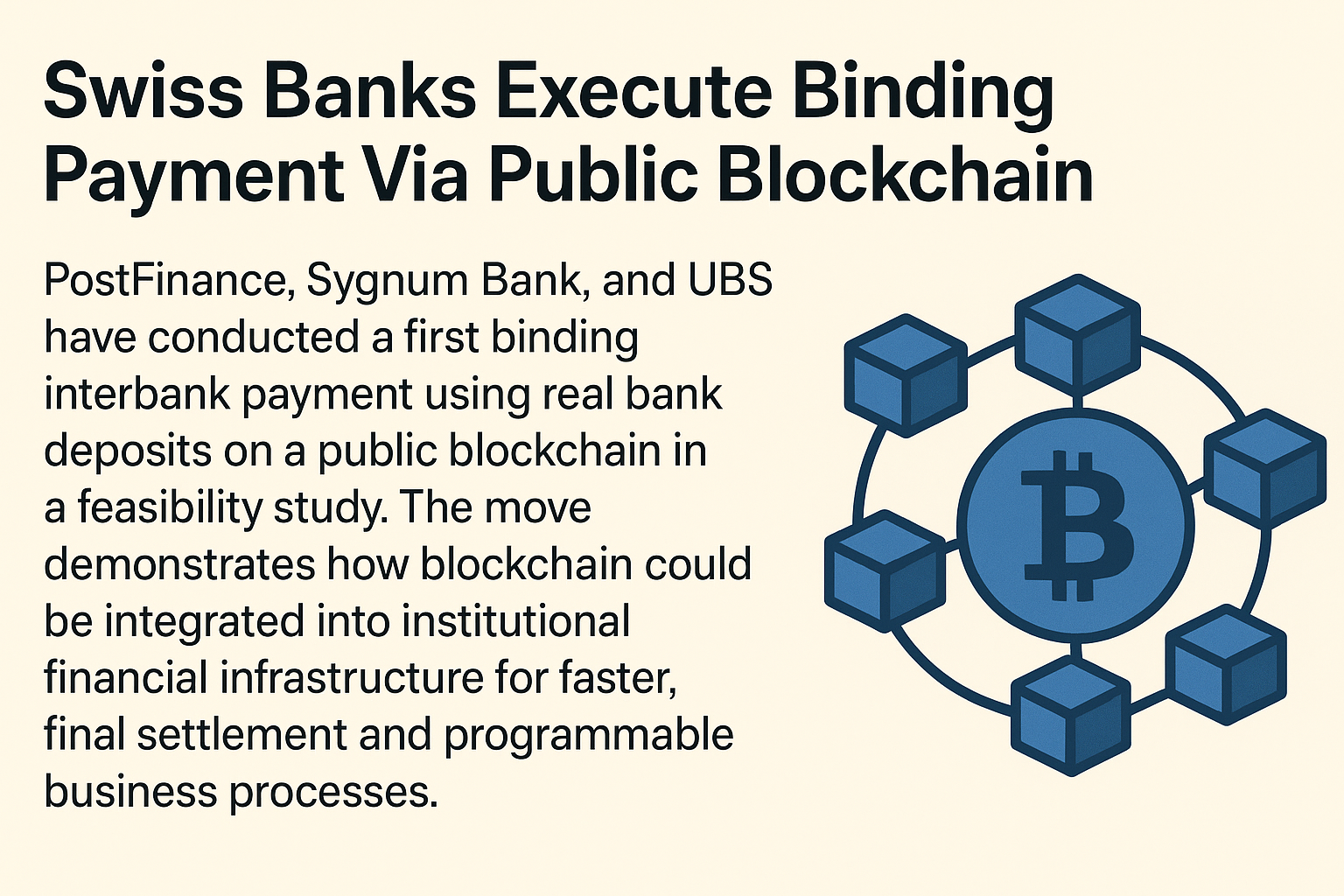Switzerland has long been a hub of financial innovation, but a recent milestone signals a new chapter even for this forward-looking banking sector. In a first-of-its-kind feasibility study, PostFinance, Sygnum Bank, and UBS have executed a binding interbank payment using real bank deposits on a public blockchain. This is not just another pilot project or a proof-of-concept — it is a concrete demonstration that public blockchains can handle regulated, high-value, real-world transactions between major financial institutions.
Why This Matters
For decades, interbank payments have relied on legacy systems like SWIFT or domestic clearing houses, which involve multiple intermediaries, reconciliation delays, and settlement risks. While efficient compared to older methods, these systems are still largely batch-based and only partially transparent.
By contrast, a public blockchain offers:
-
Real-time settlement: Transactions are recorded and settled almost instantly.
-
Transparency: All participants can verify the transaction in real time.
-
Programmability: Smart contracts allow automatic triggers for complex business processes, such as conditional payments, escrow, or compliance checks.
The feasibility study showed that these benefits can be realized even when dealing with regulated bank deposits, not just tokenized assets or cryptocurrencies. This is a significant leap from the theoretical into the practical.
How the Pilot Worked
According to the announcement reported by Reuters, the participating banks used actual Swiss bank deposits to execute the payment on a public blockchain. Unlike private or permissioned ledgers — which are closed ecosystems — public blockchains are open networks where anyone can verify transactions. This makes the achievement notable: banks traditionally prefer tightly controlled environments, but this test shows they are open to experimenting with public infrastructure as well.
The binding nature of the payment also sets it apart. Many blockchain pilots are simulations or use test tokens. Here, real money moved between banks, creating a legal and operational precedent.
Institutional Integration of Blockchain
Integrating blockchain into traditional banking infrastructure could bring a range of advantages:
-
Reduced operational costs by cutting intermediaries and manual reconciliation.
-
Faster settlement times, moving from T+2 days to near-instant.
-
Enhanced compliance via built-in audit trails.
-
New business models enabled by smart contracts, such as automated trade finance or dynamic cross-border payments.
This development is also timely. As central banks around the world experiment with Central Bank Digital Currencies (CBDCs), commercial banks are under pressure to modernize their infrastructure. Switzerland’s example shows that blockchain is not just a cryptocurrency fad but a viable backbone for institutional finance.
Looking Ahead
If the feasibility study’s success leads to broader adoption, we could soon see:
-
Cross-border interbank payments on public blockchains, reducing friction and FX costs.
-
Programmable deposits, where compliance, interest accrual, or collateralization happen automatically.
-
Hybrid systems, where CBDCs, tokenized securities, and traditional deposits interact seamlessly.
However, challenges remain. Questions of scalability, regulatory oversight, data privacy, and network security must be addressed. Public blockchains are open by design, and banks will need robust frameworks for identity verification, risk management, and legal recourse.
The first binding interbank payment on a public blockchain by PostFinance, Sygnum Bank, and UBS marks a watershed moment. It proves that blockchain is no longer a niche technology but a powerful tool that can integrate directly into the heart of traditional finance. As more institutions experiment with this model, the lines between “traditional” and “digital-native” finance will blur — and the winners will be those who adapt quickly.
This Swiss experiment offers a glimpse of a future where banking is faster, cheaper, and more programmable. And if history is any guide, Switzerland may once again be setting the pace for global finance.




